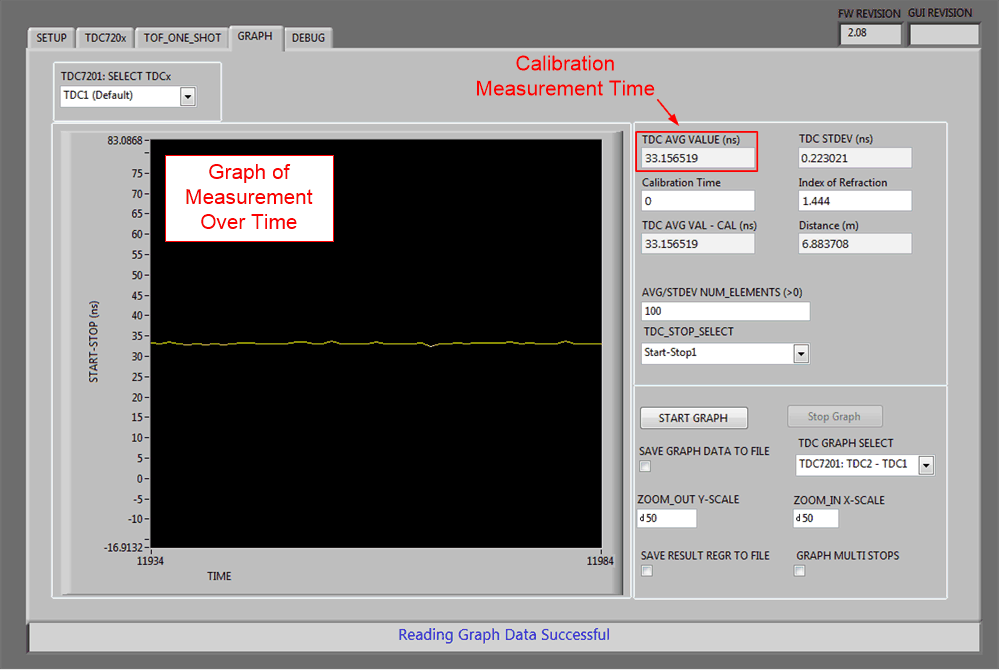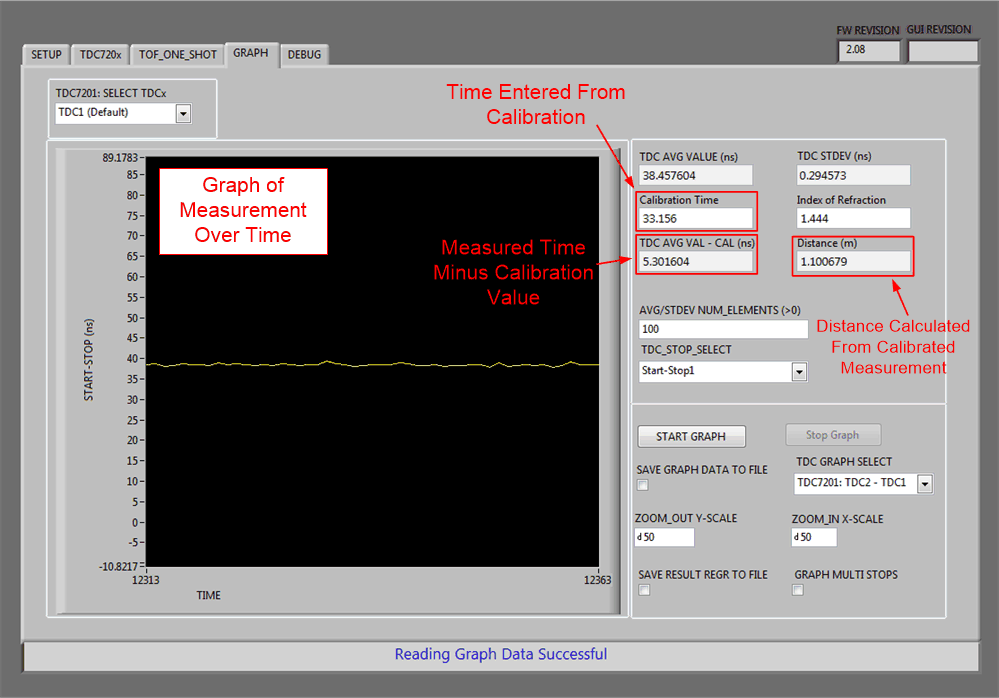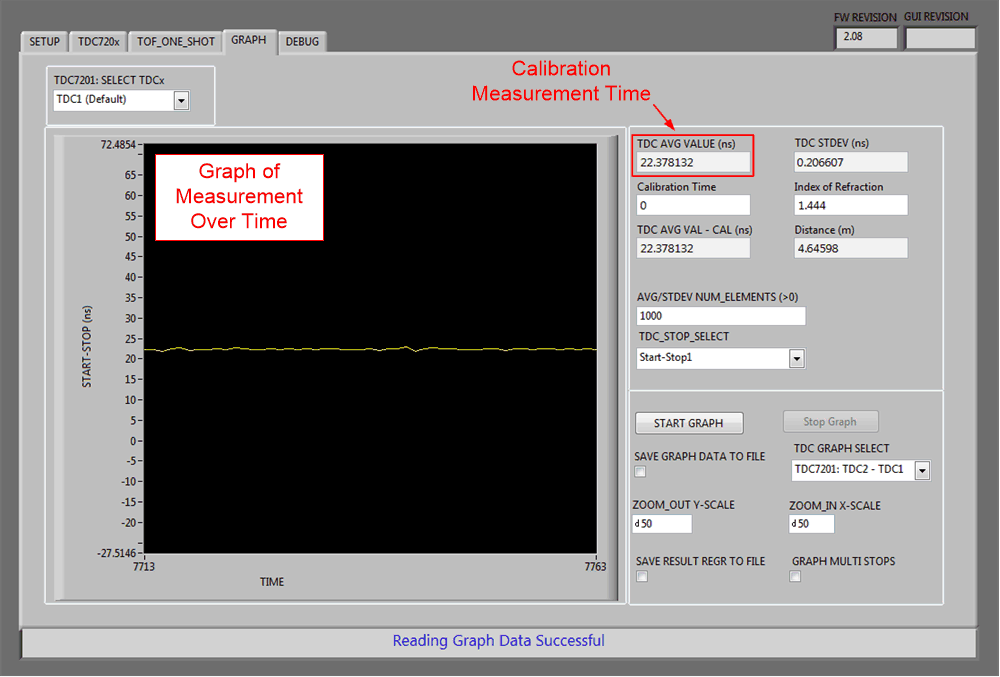JAJU648A November 2018 – April 2022 TLV3601 , TLV3601-Q1 , TLV3603 , TLV3603-Q1
- 概要
- Resources
- 特長
- アプリケーション
- 5
- 1System Description
- 2System Overview
- 3Hardware, Software, Testing Requirements, and Test Results
- 4Design Files
- 5Related Documentation
- 6About the Author
- 7Revision History
3.2.2.1.2 Time-of-Flight Test
By using the constant speed of light through a fiber-optic medium, the reference design can be used to measure the length of any connected optical cable. This principal is the same as a measurement made through the air, but just uses a different constant for the speed of light. A standard index of refraction of 1.444 for the single mode fiber is used in the tests for this design, which divides the standard speed of light in a vacuum by a factor of 1.444. When the laser power is set according to Section 3.2.1 the design is then configured by default to perform a time-of-flight measurement using the TDC7201. The GUI software allows for the start of a measurement and can also control the TDC7201 settings. For the tests in this section, the transimpedance gain is 10 kΩ.
Figure 3-8 and Figure 3-9 illustrate the calibration and distance measurements for a cable with a total length of 1.1 m including any added connectors. The GUI display shows a line of measurements over time and the calculated average values are displayed in the results at the top right of the display. The functionality is built into the default TDC7201EVM software. For more information see the TDC7201-ZAX-EVM user's guide. The calibration time measurement removes the delay added by the fixed fiber cables attached to the photodiode and laser diode that are always present in the system. A 100-point average is used to calculate the calibration value with a standard deviation of 0.22 ns, which is expected from the TDC7201. Figure 3-9 illustrates the measurement after calibration of a 1.09855-m cable, which yields an average error of only 2 mm and a standard deviation of 0.29 ns (6.1 cm). This measurement shows that the primary limitation of the system accuracy is dominated by the TDC7201 0.25-ns accuracy, as is expected. Use an optical attenuator to adjust the signal amplitude for these measurements.
 Figure 3-8 1.1-m Cable Measurement Calibration
Figure 3-8 1.1-m Cable Measurement Calibration Figure 3-9 1.1-m Cable Measurement
Figure 3-9 1.1-m Cable MeasurementFigure 3-10 and Figure 3-11 illustrate the calibration and measurement of a 2.07-m long cable with connectors made without any optical attenuation present in the system. The absence of attenuation causes the amplifier circuit to be overdriven during the measurements as illustrated in Figure 3-7, which yields a larger average error of 2.9 cm compared to the measurements made with the non-overdriven signal, thus implying that the overdriven signal adds some delay to the system that is not accounted for in the calibration. The cable measured in this test has an open adjustable optical attenuator in its path that can also contribute some error. The standard deviation is 0.25 ns, as expected from the TDC7201.
 Figure 3-10 2-m Cable Measurement Without Any Attenuation Calibration
Figure 3-10 2-m Cable Measurement Without Any Attenuation Calibration Figure 3-11 2-m Cable Measurement Without Attenuation
Figure 3-11 2-m Cable Measurement Without Attenuation